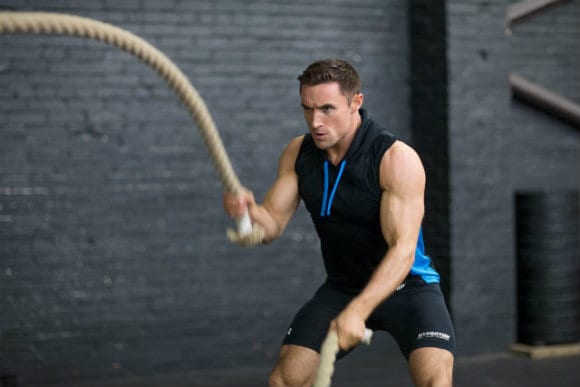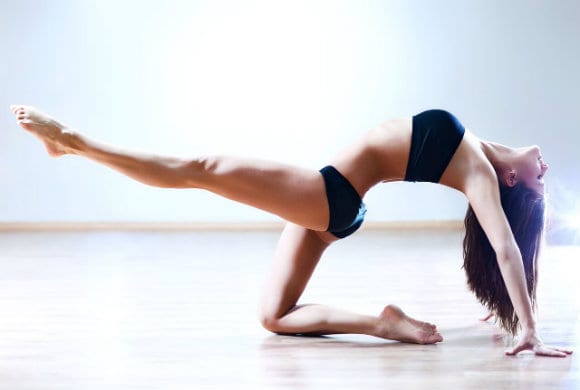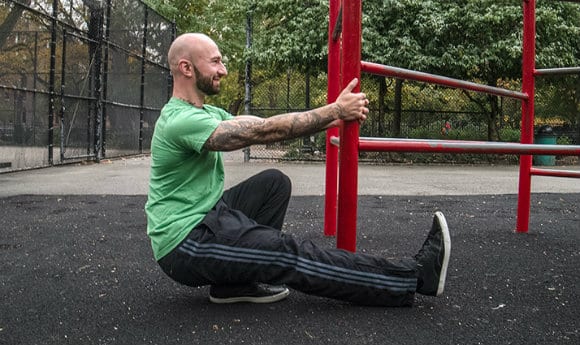By healthiergang writer , former competitive athlete and currently Bodybuilding athlete (Bikini category).
Motor coordination
La motor coordination it is one of the fundamental requirements in many sports. Actually it is the basic requirement in most of them.
For this reason a lot of time and energy are spent on improving it. In volleyball it is like this, we spent hours and hours on carpets or fit-balls to improve proprioception and stability, and in the end it served.
In fact, the transfer on performance is, in most cases, very strong. So let's try to understand how to improve coordination and how a workout in the gym can help us in this sense.

Definitions
Motor coordination is defined as the ability to perform any movement in the most effective way [1].
We can distinguish 2 types of capacities:
# 1. Basic coordination skills. They are represented by the ability to learn a new movement, to control and regulate it and to know how to adapt and transform the movements that have been learned according to need.
#2. Specific coordination skills. In turn they are divided into several categories:
? Coupling and combination of movements. Link between them of motor skills already acquired
? Oculo-muscular coordination. The ability of the brain to perform a movement regulated by external factors (e.g. running intensity dosage in marathons)
? Of differentiation. It consists in the differentiation of movement on the basis of the variation of stimulus (e.g. variation of the angle of the ground while running)
? Of balance. The body's ability to maintain a certain position over time
? Orientation. The body's ability to move in space
? Of rhythm. It consists in the ability to organize movements so that the resultant is as fluid as possible
? Reaction. The ability to respond to external stimuli. Particularly high when the autonomic nervous system tends to be orthosympathetic (fight or fly).
? Transformation. Very important in dynamic sports such as football or rugby, consists in the ability to change the movement in a sudden way (direction, speed, etc.) 7
Proprioception
Another concept that we must now analyze is that of proprioception. It is a field directly related to motor coordination. It is also referred to as kinesthesia and is the ability to recognize the position of one's body in space and the state of contraction of one's muscles. This even without the necessary support of sight (essentially even with eyes closed).
This ability is allowed by the presence of specific receptors (called proprioceptive receptors). These are nerve endings which, being sensitive to changes in the body and muscle contraction, send signals that pass from the spinal cord up to specific areas of the brain, specifically at the brain level, responsible for processing such information.

We can distinguish different proprioceptors:
? Neuromuscular spindle. It measures the variation in length of the muscle over time, therefore its speed of lengthening and shortening. It is therefore endowed with the ability to contract itself and goes along the entire muscle band in a parallel manner.
? Joint capsule sensor. It allows you to perceive the displacement of one or more bone segments with respect to others.
Golgi tendon organ. Present at the tendon level, it goes to perceive the tension or, more specifically, the variations thereof. It is a high threshold sensor that preserves the integrity of the tendon. In fact it leads to a cancellation of the muscle stimulus (the muscle relaxes) when the pressure becomes excessive and endangers the muscle structure.
? Corpuscle by Ruffini. It intervenes in the perception of pressure and tactile stimuli, especially when prolonged and intense. It is present in the skin and joints (in the capsules).
? Pacini corpuscle. This is also present in the skin. It is sensitive to vibrations.
How to Train Coordination?
Having seen and understood what motor coordination is, let's try to understand how to train it. A first point is certainly to train our proprioception, so yes to exercises on specific platforms in the absence of total balance but, in general, to any exercise performed with eyes closed, as long as it is aimed at becoming aware of muscle movement and position. of the body in space.
While this type of training is functional to almost all sports, to improve real motor coordination, we should do something specific to the sport we are going to performAnd. So in the case of sports in which you are often in a squatting position (skiing, volleyball, etc.) you can perform squats or similar movements on an unstable platform or on a fit-ball. Obviously, everything must be done in a gradual and thoughtful way, in order to avoid falling or getting injured in any way.
In general, however, in the world of the gym, a type workout functional. This training is actually the result of a misunderstanding as functional training should be functional to something, therefore we cannot propose a general method for any type of subject.

However, this methodology has something meaningful at an application level. In fact, it very often involves the use of unstable surfaces in order to improve the coordination system (rowers on a single support surface or crosses for the chest on fit-ball etc ..). These exercises can indeed prove to be extremely helpful though aimed at improving proprioception while working out in the weight room.
In other words, if I get used to carrying out a pushing movement on the sagittal plane (what could normally be a flat bench) having one less support surface or with an element of instability, then I can then improve my coordination (and therefore proprioception of each muscle involved) in the main exercise. This will be extremely advantageous if aimed at improving the motor pattern and, secondly, performance.
Conclusions
To conclude, let's review the possible ways to improve motor coordination:
? Exercises without the aid of sight aimed at controlling the variations of the body in space.
? Exercises on unstable floors by reproducing the movements of the specific sport.
Exercises in the gym using elements of instability to improve proprioception and control of the muscles involved.
With these three simple types of training (which can be done at the beginning or end of the session or even in specific sessions) we will soon find ourselves witnessing a strong improvement in performance. Guaranteed!


























